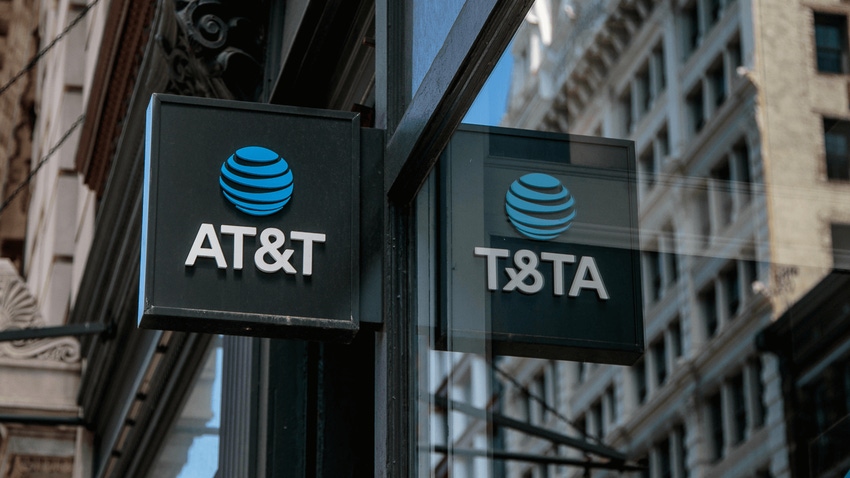AT&T CEO sees 'healthy growth' in wireless, launches cost-cutting plan
'I feel fine about where things are going,' said AT&T CEO John Stankey. AT&T also plans to trim another $2 billion or more off its annual expenses over the next three years.

AT&T CEO John Stankey said he continues to view the US wireless marketplace as "supporting healthy growth."
"I feel fine about where things are going," he said Wednesday during AT&T's quarterly conference call. "We think what we have out in the market is performing very well."
He also said that AT&T doesn't necessarily feel a pressing need to overhaul its strategic approach to the wireless market in light of the new pricing plans launched by T-Mobile and Verizon in recent months.
"Demand has been pretty solid in the market," he said, noting that AT&T's sales slipped slightly as consumers evaluated the new offers from AT&T's rivals. But he said "you're not going to see some dramatic shift in our approach" in response.
However, AT&T said it completed its $6 billion cost-savings project ahead of schedule, and now it plans to trim another $2 billion or more off its annual expenses over the next three years.
Verizon last year launched its own cost-cutting program, designed to cut $2-3 billion from Verizon's bottom line by 2025. That program followed the four-year, $10 billion cost-cutting program Verizon finished in 2021.
Mobile competition
AT&T last month warned that it would report fewer new wireless subscribers in its second quarter compared with its first quarter 2023 results. In its new report this week, AT&T said it added 326,000 new postpaid phone customers in the second quarter, which is below the 424,000 it reported in the first quarter.
That, according to the financial analysts at Evercore, represents "continued normalization of industry growth." Indeed, the US wireless industry has been growing at an oversized rate in recent years, and most expect that growth to moderate in the coming months.
Verizon, for its part, reported earlier this week continued losses of customers in its consumer business.
In terms of finances, AT&T reported wireless service revenue growth of just under 1%, slightly above some analyst estimates.
"Our wireless business is growing share," Stankey said. "Customers are voting with their wallets."
Interestingly, Stankey took a swipe at cable companies like Cox, Comcast, Charter Communications and Altice, which are all expanding their mobile offerings. Cox, Charter and Comcast all use Verizon's network for their offerings, while Altice uses T-Mobile's network. Stankey, of AT&T, said the cable companies don't have the "strategic advantage" that AT&T does in terms of owning a wireless network. He said the cable companies are using mobile services to "protect customers they already have" rather than growing their overall businesses.
AT&T, for its part, confirmed that it now covers 175 million people with its midband 5G network, and expects to increase that figure to 200 million by the end of this year. But company officials declined to discuss AT&T's 5G plans beyond 2023.
The lead issue
Not surprisingly, company officials during AT&T's quarterly conference call discussed the presence of lead in the operator's network. The situation stems from a series of detailed, lengthy articles by The Wall Street Journal on aging telecommunications cables that may contain hazardous amounts of lead. The publication's exposé acted like a sledgehammer on shares of AT&T, Verizon and other telcos amid reports of cleanup costs totaling up to $60 billion.
Stankey said that, in the early part of the 20th century, it was common to protect cabling with lead. He said lead-clad cables were used in telecommunications infrastructure as well as in the power grid and in railway systems. He said that, based on current testing and public health guidelines, there is "no reason to believe these cables pose a public health risk."
AT&T said last week that lead-covered cables represent less than 10% of its total copper network footprint, which spans around 2 million miles of cable. According to one financial analyst firm covering the company, AT&T might ultimately spend just $84 million per year cleaning up those potentially hazardous cables.
During AT&T's earnings call, Stankey also addressed questions about the operator's workforce and how it might be affected by working with lead-clad cables. He said the company follows current regulatory guidance on the topic. He added that "there hasn't been anything material to disclose" about any lawsuits or workplace claims related to the topic of lead cables.
Related posts:
— Mike Dano, Editorial Director, 5G & Mobile Strategies, Light Reading | @mikeddano
About the Author(s)
You May Also Like












